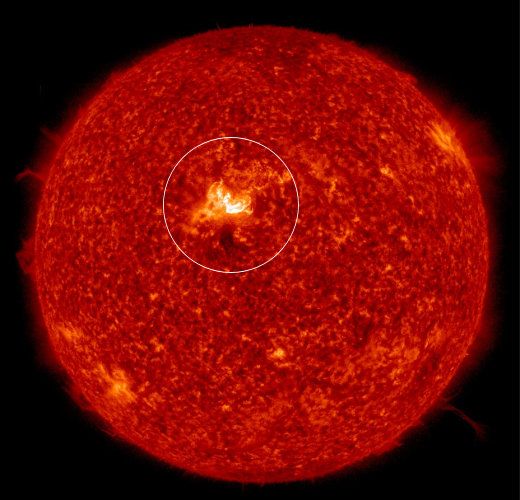The sunspot appeared last week as large but relatively calm in the active region 2882, or AR2882.
But now it begins to activate and the AR2882 erupts with a powerful coronary mass ejection (CME) on the morning of October 9 (06:40 UT), producing strong M1.6 class solar radiation aimed at the Earth. NASA’s Solar Dynamics Observatory captured the extreme ultraviolet explosion:
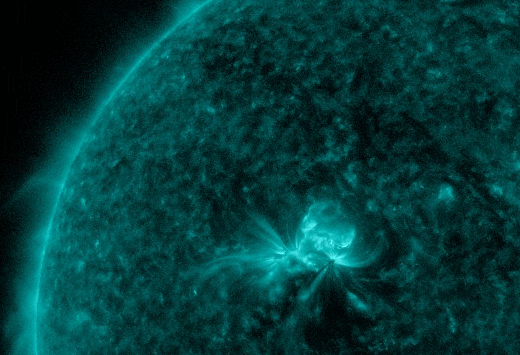
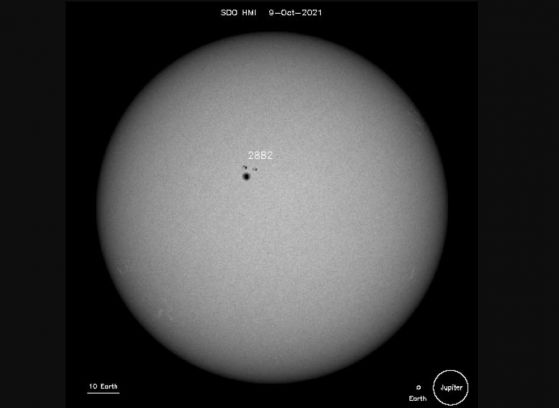
The eruption’s radiation ionizes the upper layer of the Earth’s atmosphere. As a result, a short wave radio eclipse occurs over the Indian Ocean (see the map of the eclipse below). Aviators, radio amateurs and ships at sea may have noticed strange effects at frequencies below 25 MHz.
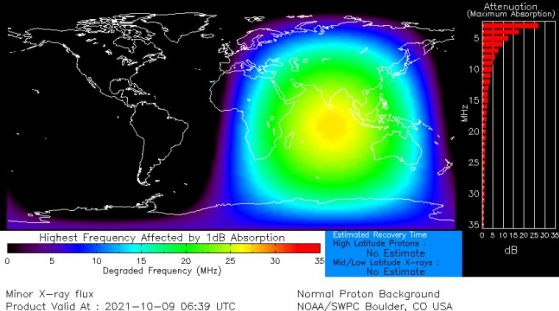
New images from NASA’s SOHO solar mission confirm that the explosion ejects CME almost directly to Earth. This is called a ‘CME halo’ because it seems to completely envelop the Sun:
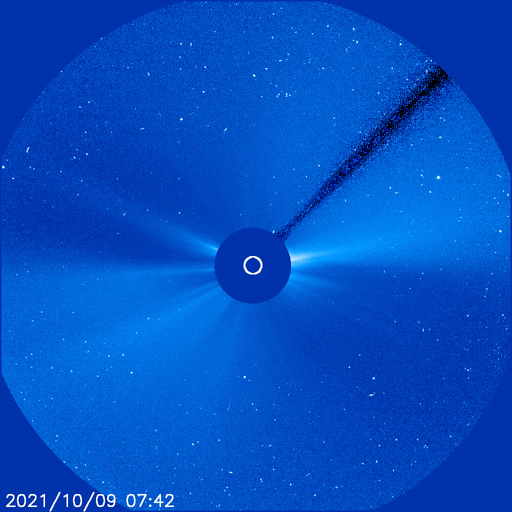
The storm is likely to reach Earth on October 12, potentially causing geomagnetic storms from class G1 to class G2. A better estimate of the CME arrival time can be obtained from the NOAA computer modeling that is underway now.
AR 2882 has a so-called “beta-gamma” magnetic field, which means that it can be a source of even stronger M-class sunspots.

A solar eruption is an explosion on the Sun’s surface caused by the sudden release of energy in twisted magnetic fields (usually above sunspots). They generate a burst of electromagnetic radiation ranging from radio waves to X-rays and gamma rays.
Scientists classify solar flares according to the brightness of X-rays in the wavelength range from 1 to 8 angstroms. There are 3 categories:
1. Class X events are large and powerful, capable of causing radio wave eclipses across the planet as well as prolonged radiation storms.
2. Class M eruptions are medium and they can cause brief eclipses of radio waves that affect the Earth’s polar regions. Small radiation storms can sometimes occur as a result.
3. In comparison to the X and M class events, C-class eruptions are small and have little impact on Earth.
A view of AR 2882 taken On October 10 from the Gurudev Observatory.
READ MORE: The Carrington Event – The Most Powerful Geomagnetic Storm in History
No products found.


